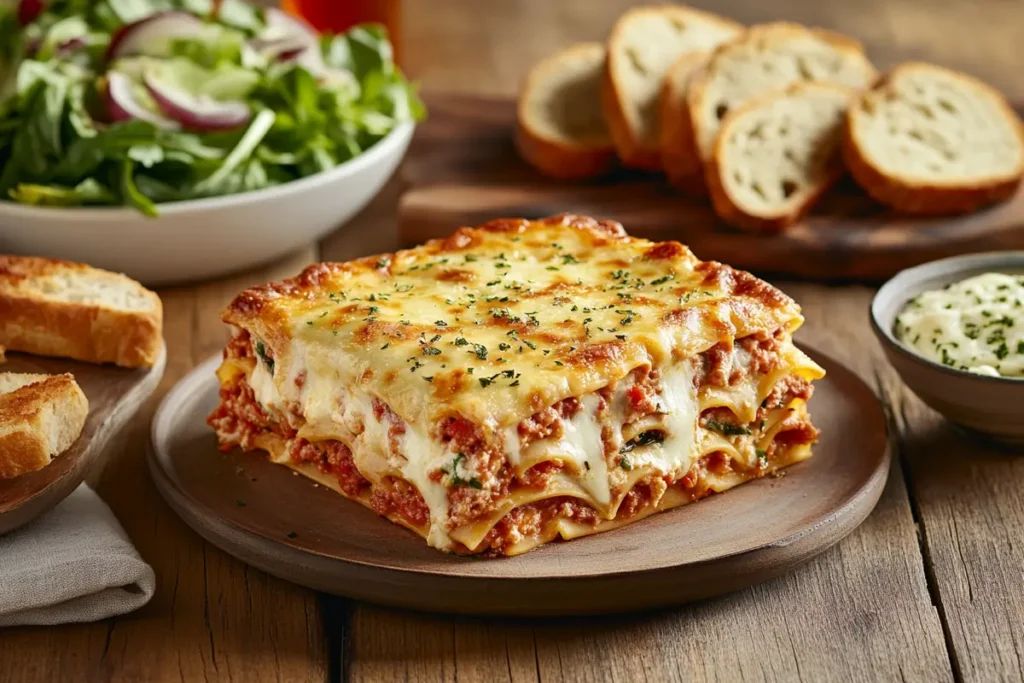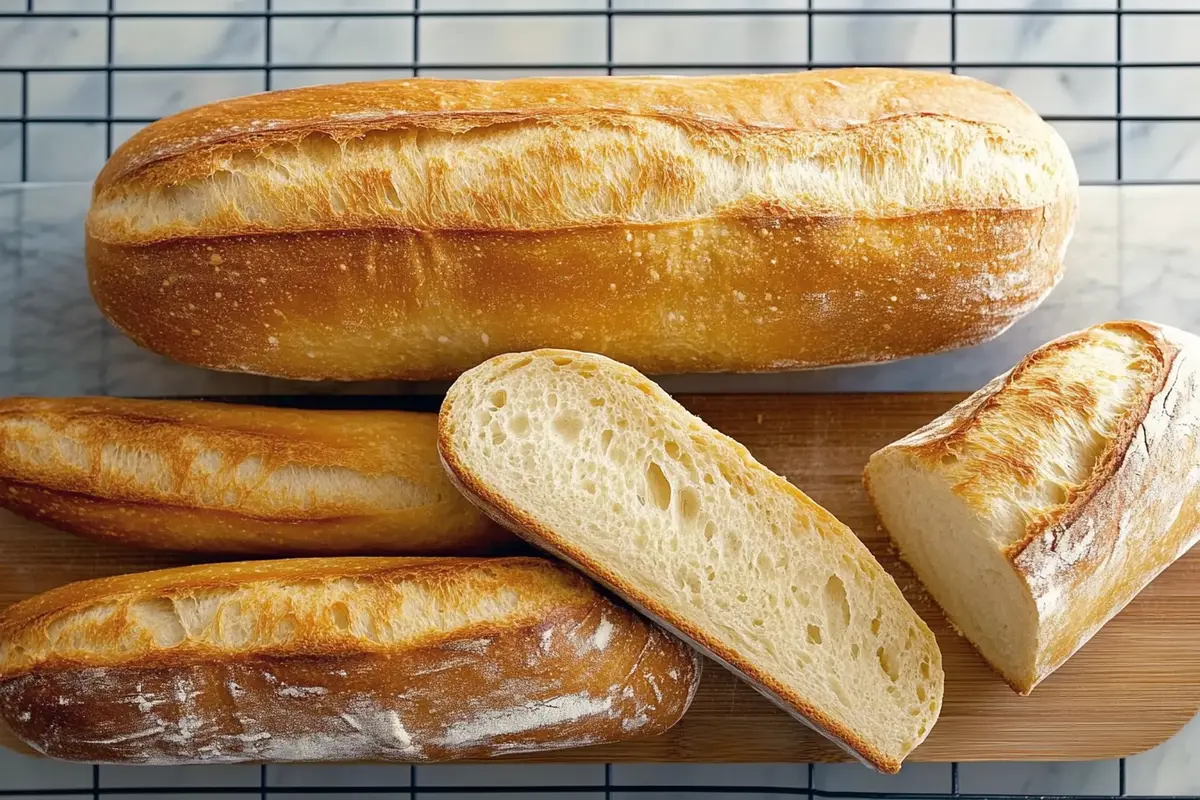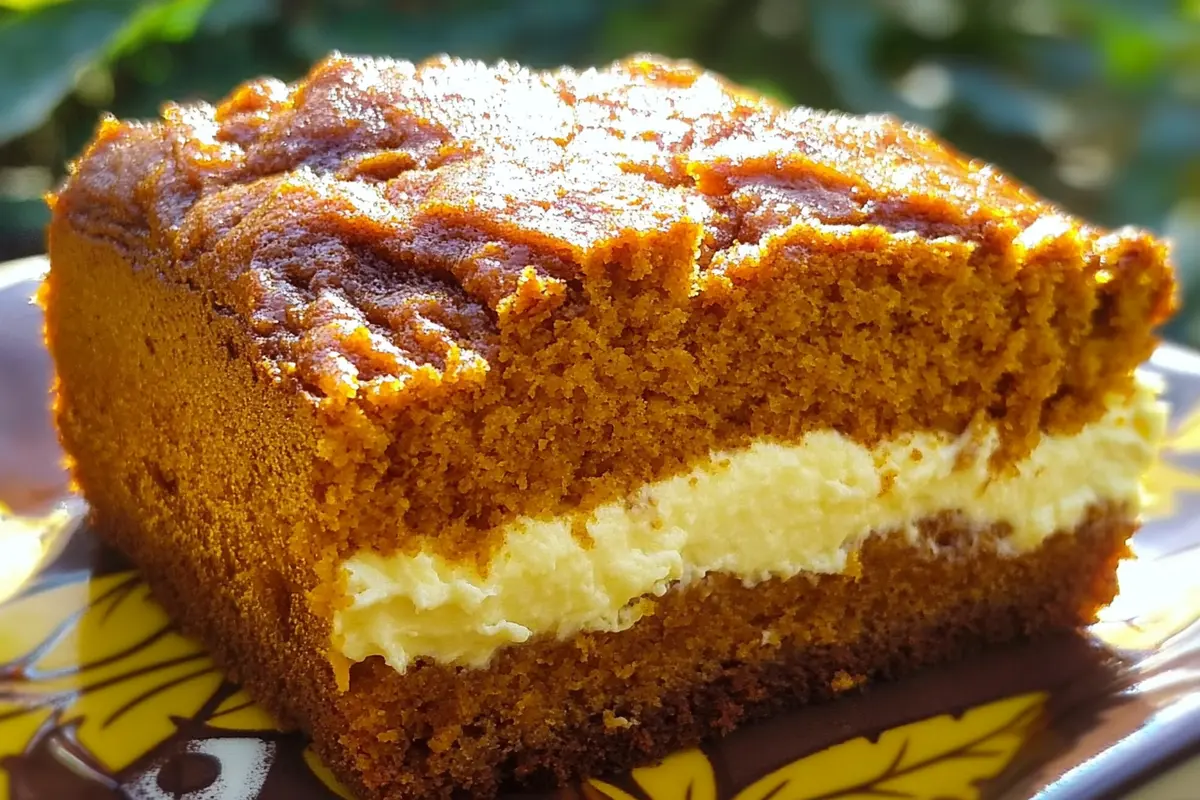Lasagna, the hearty Italian dish loved by food enthusiasts worldwide, becomes even more delightful with Barilla’s oven-ready lasagna sheets. Whether you’re a seasoned cook or a beginner, crafting this culinary masterpiece is simpler than it seems.
Introduction to Barilla Lasagna Recipe
The Popularity of Lasagna in Italian Cuisine
Lasagna is more than just a meal; it’s a celebration of flavors, layers, and tradition. This classic dish has graced Italian tables for centuries, symbolizing warmth and togetherness. What makes lasagna special is its ability to adapt—meat lovers, vegetarians, and even those with dietary restrictions can savor its charm.
Why Choose Barilla for Your Lasagna?
When it comes to making lasagna, Barilla stands out for its reliable and high-quality ingredients. Their oven-ready lasagna sheets eliminate the need for pre-boiling, saving time and effort without compromising flavor or texture. Paired with fresh vegetables, cheeses, and sauces, Barilla ensures that your lasagna is always a hit.
Understanding the Components of Barilla Lasagna
Barilla Oven-Ready Lasagne Sheets
Features and Benefits
Barilla’s oven-ready lasagne sheets are a game-changer for home cooks. These sheets don’t require pre-boiling, making them incredibly convenient. Made with high-quality durum wheat, they retain their texture and firmness even after baking. Plus, they absorb just the right amount of sauce, creating perfectly moist and tender layers.
Not only do they save time, but they also reduce cleanup—no pots of boiling water to worry about! This innovative approach helps you focus on crafting the perfect lasagna.
How to Use Oven-Ready Lasagne Sheets
Using these sheets couldn’t be simpler. You just layer them directly into your baking dish with sauces and fillings. To ensure they cook evenly, spread a generous amount of sauce underneath and between the sheets. Remember, they work best when fully covered in sauce to prevent dryness.
Traditional Meat Sauce (Ragù)
Ingredients and Preparation
The foundation of any classic lasagna is its ragù, a rich, hearty meat sauce. To create it, you’ll need ground beef or turkey, onions, garlic, tomatoes, olive oil, and a mix of Italian herbs like oregano and basil. Some recipes also include carrots and celery for added depth.
Start by sautéing aromatics like onions and garlic in olive oil until fragrant. Add the meat, cooking until browned, and then stir in the tomatoes and herbs. Simmer the mixture on low heat for at least 30 minutes to meld the flavors together.
Béchamel Sauce
Ingredients and Preparation
This creamy white sauce adds a velvety texture to lasagna. You’ll need butter, flour, milk, and seasonings like nutmeg, salt, and pepper. Begin by melting butter in a pan, whisking in flour to form a roux. Gradually add warm milk, whisking continuously to avoid lumps, until the sauce thickens.
Achieving the Perfect Consistency
For the perfect béchamel, consistency is everything. It should be smooth and thick enough to coat the back of a spoon. If it’s too thin, add a little more roux; if too thick, thin it with extra milk. Don’t forget to season lightly—nutmeg brings out the sauce’s natural richness.
Cheese Selection
Recommended Cheeses for Lasagna
Cheese is the heart of lasagna’s creamy layers. Mozzarella, ricotta, and parmesan are the classics. Mozzarella melts beautifully, ricotta adds creaminess, and parmesan offers a sharp, nutty flavor. A mix of these cheeses creates the perfect balance of textures and tastes.
Balancing Flavors with Cheese
To avoid overpowering the dish, use cheese sparingly between layers. You can also experiment with alternatives like provolone or fontina for a unique twist. Always shred your cheese fresh for better meltability and flavor.
Step-by-Step Preparation of Barilla Lasagna
Preparing the Meat Sauce
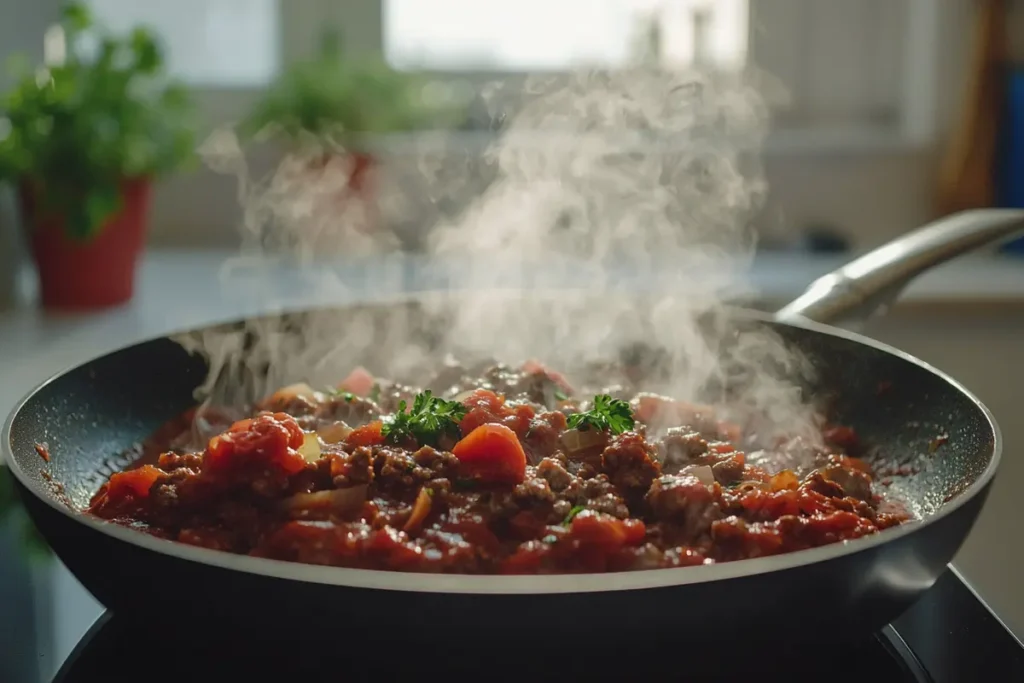
Sautéing Aromatics
The first step in making a delicious meat sauce is sautéing aromatics. Heat a generous splash of olive oil in a large skillet, then add finely chopped onions, garlic, and, if desired, carrots and celery. Stir until the vegetables soften and release their aroma—this forms the flavorful base of your sauce.
Browning the Meat
Next, add ground beef, turkey, or your preferred protein to the skillet. Break the meat apart with a wooden spoon, stirring frequently to ensure it browns evenly. The caramelization from browning intensifies the depth of flavor in your sauce.
Simmering with Tomatoes and Herbs
Once the meat is browned, stir in crushed tomatoes, tomato paste, or a mix of both. Add Italian herbs like oregano, basil, and thyme, along with salt, pepper, and a pinch of sugar. Let the sauce simmer on low heat for 30-45 minutes, stirring occasionally. This slow cooking melds the flavors beautifully, creating a rich and hearty ragù.
Preparing the Béchamel Sauce
Making the Roux
A classic béchamel starts with a roux—a mixture of equal parts butter and flour. Melt the butter in a saucepan over medium heat, then whisk in the flour. Stir continuously for 1-2 minutes until the roux takes on a pale golden hue.
Incorporating Milk and Seasonings
Gradually add warm milk to the roux, whisking constantly to prevent lumps. Continue stirring as the sauce thickens, then season with salt, pepper, and a hint of nutmeg. The result should be smooth, creamy, and slightly thick—a perfect complement to the meat sauce.
Assembling the Lasagna
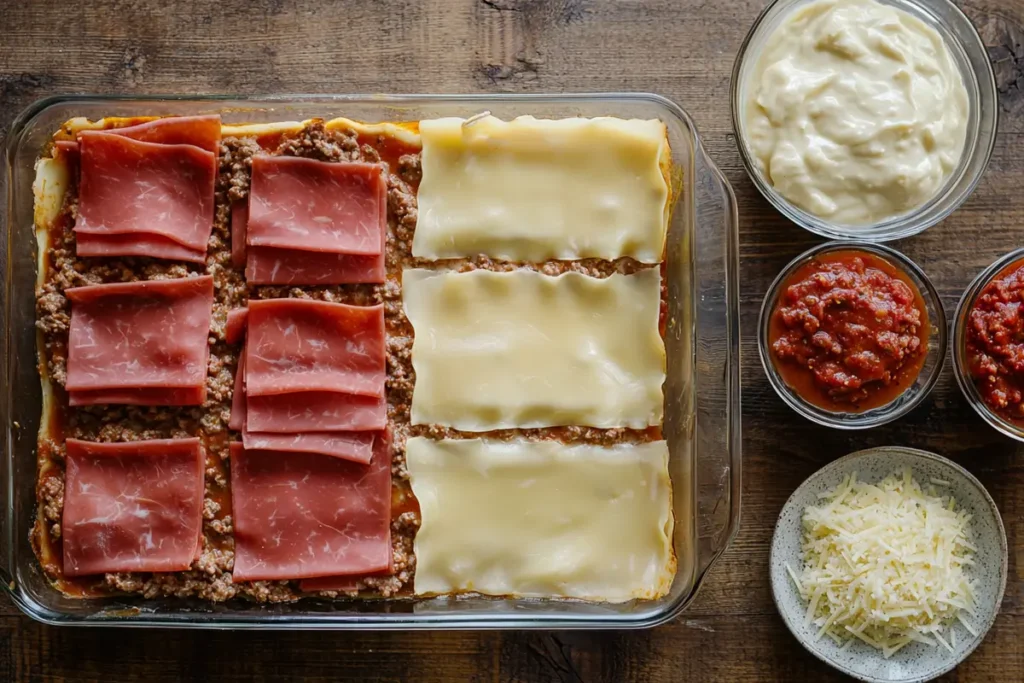
Layering Order and Techniques
Now comes the fun part: assembling your lasagna! Begin by spreading a thin layer of meat sauce on the bottom of your baking dish to prevent sticking. Lay a sheet of Barilla oven-ready lasagna over the sauce. Next, add another layer of meat sauce, followed by béchamel, and a sprinkle of shredded mozzarella. Repeat this process until you reach the top of the dish, finishing with a generous layer of cheese.
Ensuring Even Distribution of Ingredients
For a perfectly balanced lasagna, distribute sauces and cheeses evenly. This ensures every bite is rich and flavorful. Use a spoon or spatula to spread each layer completely, reaching every corner of the dish.
Baking the Lasagna
Optimal Oven Temperature and Time
Preheat your oven to 375°F (190°C). Cover the lasagna with foil to retain moisture and bake for 25-30 minutes. Then, remove the foil and bake for an additional 15-20 minutes to allow the cheese to brown and bubble beautifully.
Achieving a Golden Crust
The crowning glory of any lasagna is its golden, bubbly crust. For extra crispiness, switch to broil mode for the final 2-3 minutes of baking. Watch carefully to avoid burning. Once done, let the lasagna rest for 10 minutes before slicing—it will firm up, making serving easier.
Tips and Variations for Barilla Lasagna
Vegetarian Alternatives
Using Vegetables and Plant-Based Proteins
For a meat-free version of lasagna, vegetables can take center stage. Layer in roasted zucchini, eggplant, bell peppers, or mushrooms for a hearty texture and depth of flavor. Plant-based proteins like lentils or crumbled tofu can mimic the meatiness of traditional ragù. For added richness, sauté these ingredients with garlic and onions before layering them into your lasagna.
Adjusting Sauces for Vegetarian Versions
In vegetarian lasagna, the sauces play an even more prominent role. Replace the meat sauce with a chunky marinara packed with vegetables, or use a creamy tomato-based sauce for extra indulgence. Adding spinach or kale to your béchamel sauce boosts both flavor and nutrition.
Gluten-Free Options
Selecting Gluten-Free Lasagne Sheets
If you’re avoiding gluten, rest assured that gluten-free lasagne sheets are readily available. Brands like Barilla offer high-quality gluten-free options made from corn or rice flour. These sheets cook similarly to traditional ones and provide the same satisfying texture.
Modifying Sauces and Fillings Accordingly
Gluten-free lasagna isn’t just about the noodles. Be mindful of thickening agents in your béchamel—swap all-purpose flour with cornstarch or gluten-free flour. Ensure any pre-made sauces or broths you use are certified gluten-free. For fillings, stick with naturally gluten-free ingredients like fresh vegetables, meats, and cheeses.
Enhancing Flavors with Herbs and Spices
Recommended Herbs for Lasagna
Fresh herbs can make your lasagna taste like it’s straight from a trattoria in Italy. Basil and oregano are classics, adding a bright, aromatic note to your tomato sauce. Fresh parsley pairs beautifully with béchamel and cheese layers, while thyme adds earthy undertones to meat sauces.
Spice Combinations to Elevate the Dish
Beyond herbs, spices can transform your lasagna into a flavor-packed masterpiece. A pinch of red chili flakes adds subtle heat, while smoked paprika brings a warm, smoky depth. For something unique, try a hint of ground fennel or cinnamon in the meat sauce—they complement the richness without overpowering the dish.
Serving and Storing Barilla Lasagna
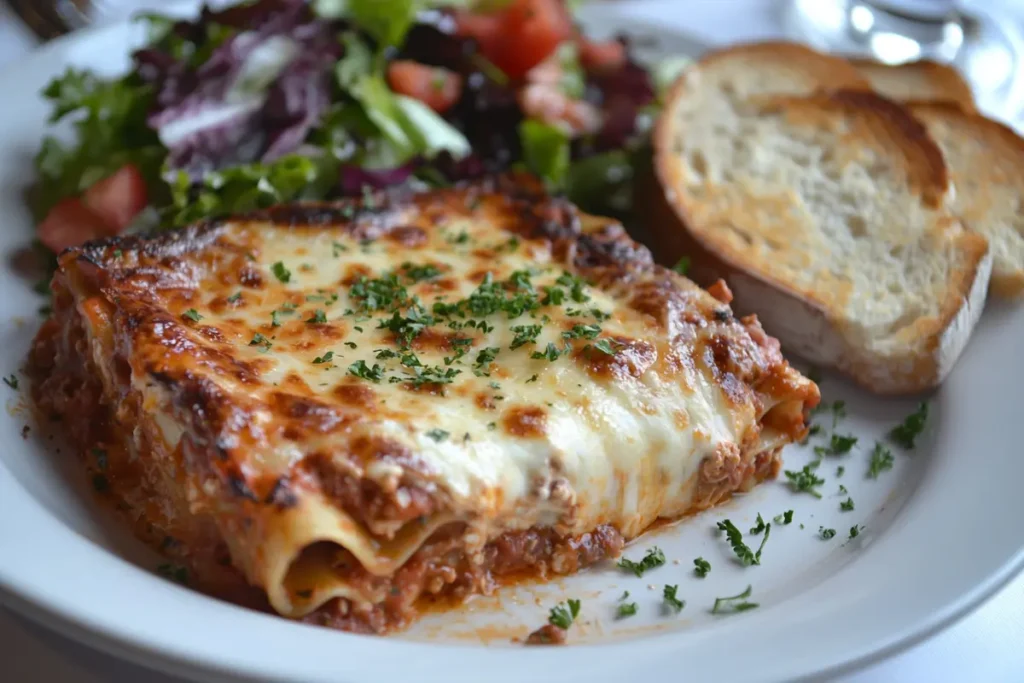
Ideal Side Dishes to Accompany Lasagna
Salads, Breads, and Beverages
A rich lasagna pairs wonderfully with lighter, refreshing sides. Serve it with a crisp green salad tossed in a zesty vinaigrette to balance the dish’s heaviness. Add a basket of warm, crusty garlic bread or herbed focaccia to soak up the extra sauce on your plate.
For non-alcoholic beverages, sparkling water with a slice of lemon or an iced tea makes a simple yet satisfying accompaniment. These choices keep the meal refreshing and complement the savory layers of your lasagna.
Proper Storage Techniques
Refrigeration and Reheating Methods
If you have leftovers, refrigerating them properly is essential to preserve freshness. Allow the lasagna to cool to room temperature, then cover it tightly with plastic wrap or transfer it to an airtight container. Stored this way, it will keep well in the fridge for up to three days.
When reheating, avoid microwaving directly to prevent uneven heating. Instead, cover the lasagna with foil and bake it in the oven at 350°F (175°C) for 20-25 minutes until thoroughly warmed. This method ensures the layers stay intact and the cheese re-melts evenly.
Freezing Lasagna for Future Meals
Lasagna is an excellent make-ahead dish! To freeze, assemble it in a freezer-safe dish but don’t bake it. Wrap the dish securely with plastic wrap and foil to prevent freezer burn. It can be stored for up to three months.
When ready to bake, thaw the lasagna overnight in the fridge, then bake as directed. Alternatively, bake it straight from frozen by adding 15-20 extra minutes to the cooking time, keeping it covered for most of the baking process.
Frequently Asked Questions
Can I use Barilla Oven-Ready Lasagne Sheets without boiling?
Absolutely! Barilla oven-ready lasagne sheets are specifically designed to skip the boiling step. They absorb moisture from the sauces during baking, softening to a perfect texture. To ensure the best results, spread a generous amount of sauce both under and over each layer of sheets to keep them moist. Read more
What is the recommended baking time for Barilla lasagna?
For a standard-sized lasagna, bake it at 375°F (190°C) for about 45 minutes. Cover the dish with foil for the first 25-30 minutes to retain moisture, then uncover for the remaining time to achieve a golden, bubbly cheese crust. If using frozen lasagna, add an extra 15-20 minutes to the baking time.
How can I prevent my lasagna from becoming watery?
Ensure your ragù is thick and well-simmered.
Drain excess liquid from vegetables like zucchini or eggplant before adding them to the layers.
Avoid overusing watery cheeses; instead, drain ricotta or opt for a thicker variety.
What are the correct layers for lasagna?
A thin base layer of sauce to prevent sticking.
Barilla oven-ready lasagne sheets.
Meat or vegetable sauce.
Béchamel or ricotta cheese.
Shredded mozzarella.
How long do you cook Barilla Collezione lasagne?
Barilla Collezione lasagne sheets require slightly different handling than the oven-ready variety. If uncooked, they usually need about 20-25 minutes of boiling before assembly. Once incorporated into the lasagna, follow the same 375°F (190°C) baking time guidelines for about 45 minutes.
Should I bake lasagna covered or uncovered?
Covering the lasagna with foil for most of the baking process helps trap moisture, ensuring the sheets cook evenly and don’t dry out. During the last 10-15 minutes, uncover the dish to allow the cheese to brown and bubble for that irresistible golden crust.

Barilla Lasagna Recipe: Step-by-Step Guide to a Perfect Italian Classic
- Total Time: 1 hour 20 minutes
- Yield: 8 servings 1x
Ingredients
- 1 lb ground beef or turkey
- 1 medium onion, finely chopped
- 2 garlic cloves, minced
- 1 can (28 oz) crushed tomatoes
- 3 tablespoons tomato paste
- 1 tablespoon olive oil
- 1 teaspoon dried oregano
- 1/2 teaspoon sugar
- 1 teaspoon dried basil
- Salt and pepper, to taste
For the Béchamel Sauce:
- 4 tablespoons butter
- 4 tablespoons all-purpose flour
- 3 cups whole milk, warmed
- 1/4 teaspoon ground nutmeg
- Salt and pepper, to taste
For the Lasagna Layers:
- 1 box Barilla Oven-Ready Lasagne Sheets
- 2 cups shredded mozzarella cheese
- 1 cup ricotta cheese
- 1/2 cup grated Parmesan cheese
Instructions
1: Prepare the Meat Sauce
- Heat olive oil in a large skillet over medium heat. Add the chopped onion and sauté until soft and translucent, about 3-4 minutes.
- Add minced garlic and cook for 1 minute until fragrant.
- Add the ground beef or turkey to the skillet. Cook until browned, breaking up the meat into small pieces with a spoon. Drain any excess fat.
- Stir in the crushed tomatoes, tomato paste, oregano, basil, sugar, salt, and pepper. Reduce heat to low and let the sauce simmer for 30 minutes, stirring occasionally to blend the flavors.
2: Make the Béchamel Sauce
- Melt butter in a medium saucepan over medium heat. Once melted, whisk in the flour to form a smooth paste (roux). Cook for 1-2 minutes, stirring constantly.
- Gradually add the warm milk to the roux, whisking continuously to avoid lumps. Cook for 5-7 minutes until the sauce thickens.
- Season with nutmeg, salt, and pepper. Remove from heat and set aside.
3: Assemble the Lasagna
- Preheat your oven to 375°F (190°C). Grease a 9×13-inch baking dish lightly with oil or butter.
- Spread a thin layer of meat sauce on the bottom of the baking dish. Lay 3-4 Barilla oven-ready lasagne sheets on top, ensuring they do not overlap.
- Add a layer of meat sauce, then drizzle with béchamel sauce. Sprinkle mozzarella and ricotta cheese evenly over the top.
- Repeat the layers: lasagne sheets, meat sauce, béchamel, and cheeses, until all the ingredients are used. Finish with a generous topping of shredded mozzarella and grated Parmesan.
4: Bake the Lasagna
- Cover the baking dish with aluminum foil to prevent the top from drying out. Bake in the preheated oven for 25-30 minutes.
- Remove the foil and bake for another 15-20 minutes, or until the cheese on top is golden and bubbly.
- Let the lasagna rest for 10 minutes before slicing and serving.
- Prep Time: 20 minutes
- Cook Time: 1 hour
- Category: Dinner
- Method: Baking
- Cuisine: Italian
Nutrition
- Serving Size: 1 slice (1/8 of the lasagna)
- Calories: ~450 kcal
- Sugar: 6g
- Sodium: 820mg
- Fat: 20g
- Saturated Fat: 9g
- Unsaturated Fat: 8g
- Trans Fat: 0g
- Carbohydrates: 37g
- Fiber: 3g
- Protein: 27g
- Cholesterol: 60mg
Keywords: Barilla lasagna recipe, Italian lasagna dinner, baked lasagna with meat sauce, easy lasagna recipe.

